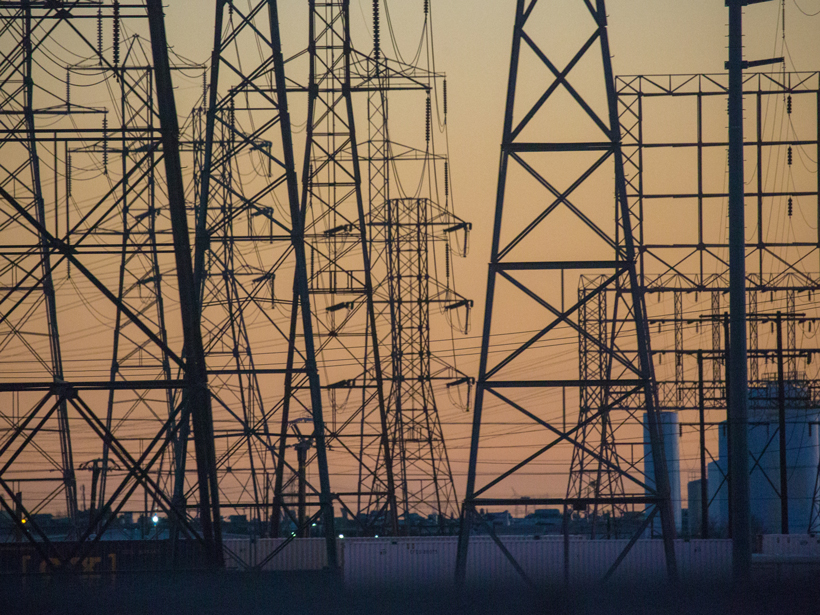Stabilization of Earth’s climate will require that energy-related carbon dioxide (CO2) emissions fall to very low levels and perhaps go negative if other greenhouse gas emissions continue. However, some energy services (for example, long-distance freight transport or air travel) will be difficult to provide without a degree of CO2 emissions.
In an effort to better understand the technological challenges of nearly eliminating fossil fuel–based CO2 emissions from the energy system, the Aspen Global Change Institute hosted a 5-day meeting last summer. Participants included a wide range of energy experts with technical expertise, complemented by a diverse group of climate scientists and social scientists. Attendees identified a set of functional elements that a near-zero CO2 emissions energy system would have to have, as well as technologies to satisfy these functional needs that could potentially compete in the marketplace.
One need is to ensure the reliability of a power sector that is dominated by intermittent renewable energy sources like wind and solar energy.
One conclusion that emerged from the workshop was the need to ensure the reliability of a power sector that is dominated by intermittent renewable energy sources like wind and solar energy. Such a system would require substantial quantities of flexible electricity generation and energy storage capabilities. Most existing dispatchable (on-demand), non-CO2-emitting generation or storage options have considerably higher capital costs than the natural gas–fired units that currently serve as a reliable on-demand energy source.
Automated demand management capable of shifting some fraction of electrical load by a few hours could make a substantial difference in the amount of flexible power generation or energy storage needed, but it cannot fill the entire gap alone. Participants agreed on the need to further develop dispatchable non-CO2-emitting generation and storage technologies such as natural gas with carbon capture and storage, nuclear power, batteries, and compressed-air energy storage. Such technologies would likely have higher capital costs but might have lower operating costs than natural gas–fired units.
Because the costs of current power-to-fuel technologies are high, lower-cost options are critical research and development priorities.
Participants agreed that energy-dense fuels are critical for powering key components of the industrial and transportation sectors, as well as providing a potential store of energy for dispatchable electricity generation with near-zero emissions. One fuel could be converted readily into another by conventional thermochemical processes, but converting electricity to fuel would likely be an important option for creating carbon-neutral fuels. Because the costs of current power-to-fuel technologies are high, lower-cost options (e.g., low-cost water electrolysis) are critical research and development priorities.
Attendees also discussed how systems that flexibly cogenerate or interconvert fuels and electricity could allow the energy infrastructure to be used a greater fraction of the time and thus lower overall costs per unit of energy services delivered.
Participants said that decarbonization of industrial process emissions such as those from cement and steel manufacturing may require carbon capture and storage or development of alternative processes or materials. They also discussed how bioenergy and technologies that can cost-effectively capture carbon from the air could make liquid hydrocarbon fuels carbon neutral. Such technologies could also achieve “negative” CO2 emissions in the form of carbon uptake, thus compensating for lingering sources of fossil or industrial process emissions.
The meeting was funded by NASA and the Heising-Simons Foundation and by funds made available to the Carnegie Institution for Science through the Fund for Innovative Climate and Energy Research.
—Steven J. Davis (email: [email protected]; @stevedavisuci), University of California, Irvine; Nathan S. Lewis, Division of Chemistry and Chemical Engineering, California Institute of Technology, Pasadena; and Ken Caldeira (@kencaldeira), Department of Global Ecology, Carnegie Institution for Science, Stanford, Calif.
Citation:
Davis, S. J.,Lewis, N. S., and Caldeira, K. (2017), Achieving a near-zero carbon emissions energy system, Eos, 98, https://doi.org/10.1029/2017EO064017. Published on 09 January 2017.
Text © 2017. The authors. CC BY-NC-ND 3.0
Except where otherwise noted, images are subject to copyright. Any reuse without express permission from the copyright owner is prohibited.

